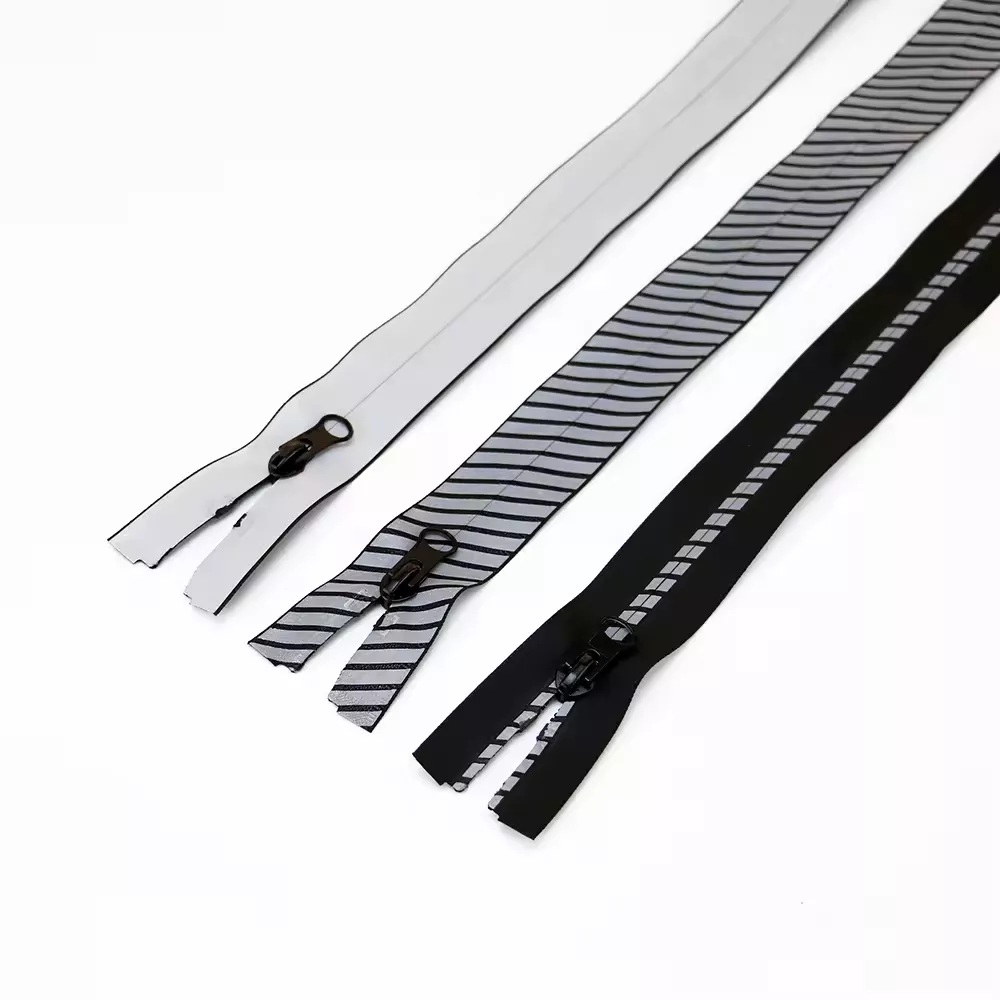
 May 06,2024
May 06,2024
 BSL
BSL
A waterproof zipper is a type of nylon zipper, which is a specially treated nylon zipper. Special treatments for waterproof zippers include pasting PVC, pasting TPU film, soaking with a waterproofing agent, and coating waterproof zippers. Among them, waterproof zippers with TPU film are high-end products of waterproof zippers.
TPU waterproof zippers were developed by YKK zippers in the 1990s. Due to the TPU waterproof zippers, they are cold-resistant to -40°C and high-temperature resistant to 100°C. They are waterproof, breathable, low-temperature resistant, and soft. TPU waterproof zippers have always been well received by customers at home and abroad. The performance of the coated waterproof zipper is no shedding, no whitening, no brittleness, low-temperature resistance of minus 70 degrees Celsius, environmental protection, softness, and good waterproofness.

PVC film waterproof zippers must contain azo, and the current EU requirement is less than 100PPM. The main material used in PVC film waterproof zippers is PVC, whose full name is Polyvinyl chloride. The main ingredient is polyvinyl chloride, and other ingredients are added to enhance its heat resistance, toughness, and ductility. The top layer of this film is paint, the main component in the middle is polyvinyl chloride, and the bottom layer is back-coated adhesive. PVC can be divided into soft PVC and hard PVC. Soft PVC is generally used for floors, ceilings, and the surface of leather. However, because soft PVC contains softeners (this is also the difference between soft PVC and hard PVC), it easily becomes brittle and difficult to preserve, so its range of use is not widespread. Hard PVC does not contain softeners, so it has good flexibility, is easy to form, is not brittle, is non-toxic and pollution-free, and has a long storage time. Therefore, it has great development and application value and a broad market. There are two reasons why PVC can be widely used: one is the unique properties of PVC (rainproof, fire-resistant, anti-static, easy to form); the other is the characteristics of low investment and high output of PVC. PVC waterproof zippers take advantage of the waterproof properties of PVC.
Waterproof zippers are widely used and are suitable for cold-proof clothing, ski clothing, down jackets, sailing suits, diving suits, tents, car and boat covers, raincoats, motorcycle raincoats, waterproof shoes, firefighting suits, bags, jackets, fishing suits, and other waterproof-related products.
1. Ironing: Ironing is likely to be the main cause of the waterproof film peeling off. Please try to avoid ironing. If ironing is necessary, please put a thin cloth on it at a temperature below 100 degrees Celsius;
2. Washing: To avoid damaging the waterproof membrane during washing, the waterproof zipper must be zipped before washing. Do not wash with hot water. When drying, please let it dry naturally;
3. Dry cleaning: The dry cleaning conditions of waterproof zippers are likely to be different from the dry cleaning conditions of clothing fabrics. All users of our company's waterproof zippers are requested to confirm in person before using our waterproof zippers;
4. Color diffusion (contamination): Waterproof zippers can easily react chemically with PVC and PU peritoneal surfaces, so they are likely to contaminate clothing fabrics. Please confirm before use. Please use an isolation cloth between the fabric and the waterproof zipper if contamination occurs. Back sewing;
Note: When red and black waterproof zippers are used with bright white fabrics, an isolation cloth must be used between the two before sewing. Especially when the fabric is coated with PU and contacts the waterproof membrane on the zipper, an isolation cloth must be used for isolation. After sewing.
5. Packaging of finished clothing: To prevent the color on the zipper from spreading to the inner fabric of the dress during transportation, please use packaging tissue between the clothing and the inside of the clothing during packaging;
